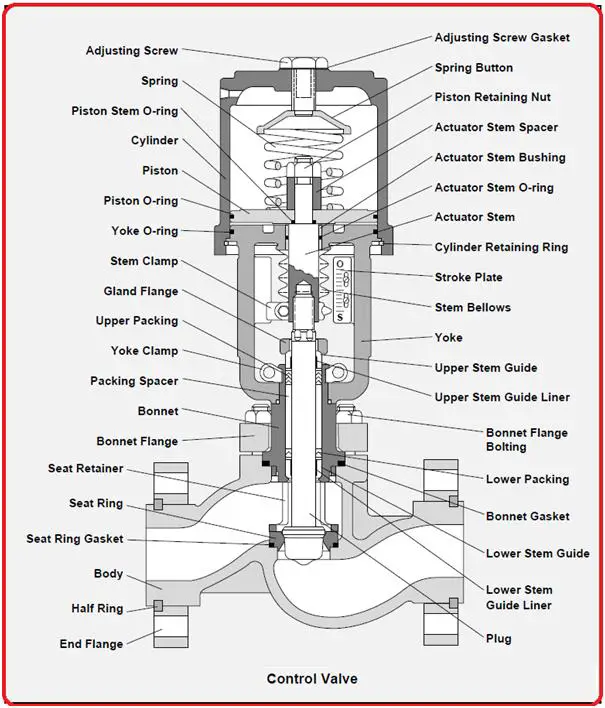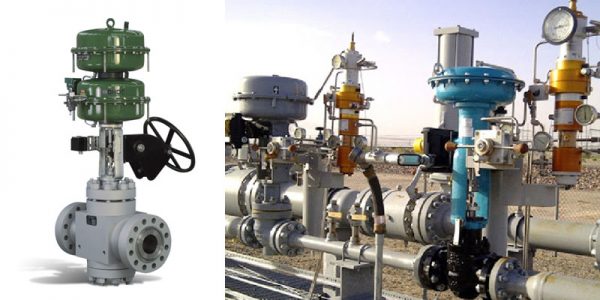The Duty of Control Valves in Liquid Flow Management Solution
The Duty of Control Valves in Liquid Flow Management Solution
Blog Article

Maximize Energy Cost Savings and Comfort With Advanced Building Automation Controls
In the realm of modern style and center administration, the combination of advanced building automation regulates stands as a crucial innovation. The convergence of technology and sustainability has birthed a brand-new age where energy efficiency, convenience optimization, and operational streamlining are no longer obtainable truths but remote ambitions. By utilizing the power of automation, structures can adapt, respond, and progress in ways that were as soon as unbelievable. The capacity for substantial energy savings and improved comfort is not just a possibility however a guarantee waiting to be satisfied. This standard shift in structure administration holds the key to opening a world where ecological conscientiousness and resident health harmoniously exist side-by-side within the walls of our frameworks.
Power Efficiency Perks
Power performance benefits can considerably decrease power intake and operational prices in structures. Energy-efficient systems, such as sophisticated building automation controls, can enhance the use of resources like heating, air conditioning, and illumination, leading to lower power expenditures over time.
Furthermore, enhanced power effectiveness can prolong the life expectancy of building tools and systems. By operating more effectively, cooling and heating systems, lighting fixture, and other structure components experience much less wear and tear, leading to decreased upkeep and substitute prices. Furthermore, energy-efficient buildings often regulate higher building values and rental prices, offering lasting monetary advantages to owners.
In addition, energy performance can enhance passenger convenience and efficiency. Properly controlled interior environments with ideal lighting and thermal conditions develop an even more pleasurable and helpful office, bring about improved staff member complete satisfaction and performance. In general, the energy effectiveness advantages connected with advanced building automation controls are diverse, including expense financial savings, environmental stewardship, and occupant health.
Enhanced Comfort Control
Enhancing comfort control in building settings needs an advanced integration of sophisticated automation systems for optimal owner wellness. By making use of sophisticated structure automation controls, facilities can customize the indoor setting to satisfy the specific requirements and preferences of passengers. control valves.
By integrating these advanced controls, structures can not only improve convenience however additionally enhance power effectiveness by maximizing system procedures based on actual tenancy and use patterns. Ultimately, prioritizing passenger comfort through sophisticated automation systems leads to a more pleasurable and healthier indoor environment.
Operational Efficiency Improvements

Moreover, the implementation of real-time surveillance and analytics tools makes it possible for structure operators to determine energy inadequacies and operational abnormalities quickly. By continually checking energy usage patterns and system performance more info here metrics, modifications can be made in real-time to optimize energy intake and make sure peak functional effectiveness. control valves. In addition, integrating demand response techniques into building automation controls can additionally boost operational effectiveness by dynamically adjusting energy usage based on grid conditions and rates signals
Indoor Climate Optimization
Effective interior climate optimization is an essential facet of structure automation controls, making sure occupants' comfort and wellness while making best use of energy cost savings. By using innovative sensors and controls, building automation systems can constantly monitor and change temperature, moisture degrees, air quality, and ventilation to produce an optimum interior atmosphere. Keeping comfy and consistent conditions not only boosts occupant fulfillment yet additionally boosts productivity and total health.
Indoor environment optimization additionally plays an important function in energy effectiveness. By fine-tuning heating, cooling, and ventilation systems based upon real-time information and occupancy patterns, developing automation controls can dramatically lower energy consumption - control valves. Applying methods such as demand-controlled ventilation and thermal zoning can help decrease energy waste while ensuring that each location of the building gets the required conditioning.

Sustainable Setting Development
Structure automation manages not only enhance indoor climate problems for energy efficiency and passenger comfort yet also lay the structure for creating a lasting environment via strategic monitoring of systems and sources. By integrating sophisticated structure automation innovations, such as sensing units, actuators, and intelligent software program, facilities can keep track of and change power use in real-time to reduce waste and minimize their carbon impact. These systems enable top article anticipating upkeep, identifying prospective concerns before they escalate and enhancing tools performance to improve long life and performance.
Furthermore, sustainable atmosphere production extends beyond energy administration to include water preservation, waste decrease, and indoor air high quality renovation. Building automation controls can regulate water usage, identify leaks, and guarantee correct waste disposal methods, adding to total sustainability initiatives. Additionally, by keeping an eye on and regulating ventilation and filtration systems, these innovations enhance passenger health and wellness and performance while lowering power usage connected with HVAC operations.
Final Thought
In conclusion, progressed structure automation regulates offer considerable benefits in terms of power financial savings, convenience control, operational efficiency, interior environment optimization, and producing a sustainable setting. By applying these controls, structures can accomplish optimal efficiency while minimizing energy consumption and boosting passenger comfort. It appears that making use of advanced automation technology is critical in improving building efficiency and producing a more lasting future.
Power efficiency advantages can substantially reduce power consumption and functional costs in structures. In general, the power effectiveness advantages connected with innovative building automation controls are complex, including price savings, ecological stewardship, and resident well-being.
Additionally, integrating need reaction techniques right into structure automation controls can further enhance operational effectiveness by dynamically changing energy use based on grid problems and rates signals.
Structure automation regulates not just maximize indoor climate conditions for power efficiency and occupant comfort however additionally lay the foundation for developing a sustainable setting with calculated management of resources and systems.In verdict, progressed structure automation manages Full Report offer significant benefits in terms of power financial savings, comfort control, operational efficiency, interior climate optimization, and creating a lasting setting.
Report this page